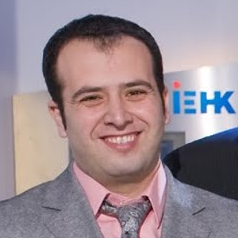Computational Materials Design for Renewable Energy Applications
A special issue of Nanomaterials (ISSN 2079-4991). This special issue belongs to the section "Nanophotonics Materials and Devices".
Deadline for manuscript submissions: closed (31 December 2019) | Viewed by 44395
Special Issue Editor
Interests: nanomaterials; interfaces; thermoelectrics; photovoltaics; phonovoltaics; multiscale modeling of materials; ML
Special Issues, Collections and Topics in MDPI journals
Special Issue Information
Dear Colleagues,
This Special Issue aims to consider computational materials methods to design nanomaterials for clean and efficient energy conversion and storage. It covers first-principles computations, atomistic simulations, and meso-, macro-, and multi-scale algorithms to understand and design multifunctional nanomaterials, heterostructures, and interfaces. The application must focus on sustainable energy such as photovoltaics, photo- and electrochemistry, CO2 capture and conversion, solar fuels, thermoelectrics, batteries, and ultra-low power electronics. Our Special Issue welcomes all submissions from all studies dealing with computational approaches to energy materials.
Dr. Ali Ramazani
Guest Editor
Manuscript Submission Information
Manuscripts should be submitted online at www.mdpi.com by registering and logging in to this website. Once you are registered, click here to go to the submission form. Manuscripts can be submitted until the deadline. All submissions that pass pre-check are peer-reviewed. Accepted papers will be published continuously in the journal (as soon as accepted) and will be listed together on the special issue website. Research articles, review articles as well as short communications are invited. For planned papers, a title and short abstract (about 100 words) can be sent to the Editorial Office for announcement on this website.
Submitted manuscripts should not have been published previously, nor be under consideration for publication elsewhere (except conference proceedings papers). All manuscripts are thoroughly refereed through a single-blind peer-review process. A guide for authors and other relevant information for submission of manuscripts is available on the Instructions for Authors page. Nanomaterials is an international peer-reviewed open access semimonthly journal published by MDPI.
Please visit the Instructions for Authors page before submitting a manuscript. The Article Processing Charge (APC) for publication in this open access journal is 2900 CHF (Swiss Francs). Submitted papers should be well formatted and use good English. Authors may use MDPI's English editing service prior to publication or during author revisions.
Keywords
- Energy conversion
- Energy storage
- Photovoltaics
- Thermoelectrics
- Electrocatalysts
- Photocatalysts
- Batteries
- Solar fuels
- Density functional theory
- Molecular dynamics
- Multiscale modeling






